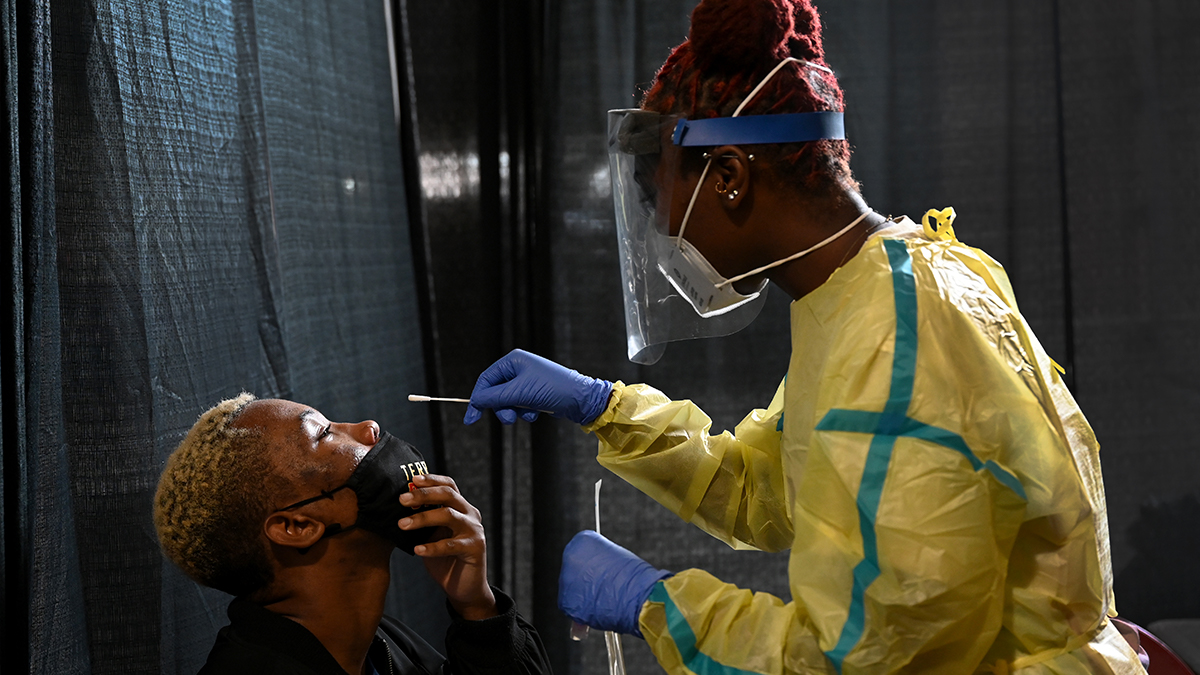Maryland Gov. Larry Hogan reported a new low for the state's positivity rate and for several counties including Prince George's Sunday. The state recorded a 3.75% positivity rate and the county had 5.53%.
The District updated the list of states that are considered high risk. People traveling from Alaska, Illinois, Indiana, Kentucky and Minnesota must now quarantine for two weeks when they arrive to D.C. States that were removed from the updated list include Delaware, Ohio and Washington.
We're making it easier for you to find stories that matter with our new newsletter — The 4Front. Sign up here and get news that is important for you to your inbox.
The University of Maryland is set to begin the semester as scheduled on August 31 but will delay undergraduate in-person instruction until September 14 due to the high positivity rate in Prince George's County, UMD President Darryll J. Pines announced Monday.
"Prince George's County remains higher than we had hoped for our fall return," Pines wrote in an email to the University of Maryland community Monday.
George Washington University also announced limited access to campus for the coming fall.
"Beginning August 28 at 5 p.m., access to all of GW’s campuses will be limited to only those who have special permission to be on campus," Scott Burnotes, Vice President for the Division of Safety and Facilities at George Washington University wrote in an email to the GW community Monday.
What the Data Shows
The seven day average for daily confirmed cases also decreased significantly in Maryland. Last week the state was at 895 and the new average is now 751.
D.C. and Virginia are not seeing the same trends. Both of their averages have remained about the same.
The total number of hospitalizations is at 75 for the District, 534 for Maryland and 855 for Virginia.
The region reported only seven new deaths, 6 in Maryland and 1 in Virginia.
The map below shows the number of coronavirus cases diagnosed per 1,000 residents.
Coronavirus Cases in DC, Maryland and Virginia
COVID-19 cases by population in D.C. and by county in Maryland and Virginia
Source: DC, MD and VA Health Departments
Credit: Anisa Holmes / NBC Washington
Local Coronavirus Headlines
- New research by Children’s National Hospital in Washington, D.C., found racial disparities in how the coronavirus affects children. Read more.
- Virginia has rolled out a smartphone app to automatically notify people if they might have been exposed to the coronavirus, becoming the first U.S. state to use new pandemic technology created by Apple and Google. Read more.
- A group of frontline employees and union leaders at the Washington DC VA Medical Center said the agency is not ensuring workers potentially exposed to COVID-19 are given work leave to prevent the further spread of the virus. Read more.
- Several parents are suing for the right to send their children to private school in person in Montgomery County, Maryland. Read more.
- A new study from the University of Virginia estimates that very few Virginians have COVID-19 antibodies. Read more.
- Some dealers at MGM National Harbor say between positive coronavirus cases and quarantines, the casino is losing employees. Read more.
- Anyone who recently attended services at one Catholic church in D.C. is being advised to self-quarantine after the pastor, who criticized coronavirus-related restrictions, tested positive for the virus. Read more.
- American Airlines says a flight out of Virginia was delayed after a passenger refused to comply with its policy requiring a face mask. Read more.
Reopening Tracker
- Private and parochial schools in Maryland can choose when to reopen after a back-and-forth between county health officials and the governor. Read more.
- Prince George's County is revising its phase two reopening executive order due to an uptick in coronavirus cases, according to the county executive's office.
- Virginia entered phase three reopening on July 1, loosening restrictions on restaurants, stores, gyms and pools. Northam said more restrictions could be implemented if cases continue to grow.
- Prince George's County entered full phase two on June 23, allowing the MGM Casino and gyms to reopen.
- D.C., entered phase two on June 22, allowing indoor dining, gyms, libraries and houses of worship to reopen with restrictions.
- Montgomery County entered phase two on June 19, reopening with restrictions gyms, houses of worship, indoor dining and retail.
- Maryland entered phase two of reopening on June 10, permitting indoor dining, outdoor pools and outside amusements to reopen.
How to Stay Safe
There are ways to lower your risk of catching coronavirus. Here are guidelines from the CDC:
- Wear a snug-fitting mask that covers your nose and mouth.
- Avoid being indoors with people who are not members of your household. The more people you are in contact with, the more likely you are to be exposed to COVID-19. If you are indoors with people you don’t live with, stay at least six feet apart and keep your mask on.
- Wash your hands often, especially after you have been in a public place.
Sophia Barnes, Andrea Swalec and Anisa Holmes contributed to this report



